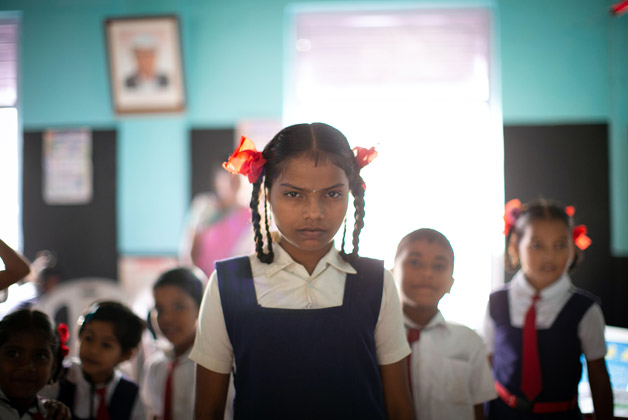

Private school education has undergone a paradigm shift in terms of its structure, demographics, economics as well as learning mechanisms. Private unaided schools have become affordable and accessible to a large proportion of the Indian population. While a colonial hangover has left Indians enamoured with the idea of English-medium education, the sharp reduction in cost of private education has attracted parents from varied income and social groups, into its folds. However, while the diversity in private schooling is now vibrant, the integration of this admixture should be less about assimilation and more about development around its distinctiveness.
As per the State of the Sector Report: Private Schools in India, the growth of enrolment in private unaided schools has increased to 34.8% in 2017 from 9.2% in 1993. During the same period, the growth of enrolment in government schools has declined from 70.8% to 52.2%. A massive shift has thus been observed among all income groups towards private schools. According to Unified District Information on School Education (U-DISE) 2019, private unaided schools cater to 9 crore students in the country. Ministry of Statistics and ProgrammeImplementation (MoSPI) 2019 pegged the contribution of this sector at Rs 1.75 lakh crore. With about 45.5% of students paying a monthly fee of less than Rs 500, private education no longer remains the exclusive privilege of the rich.
Incentives such as vouchers and direct cash transfers to mothers, private-public partnerships, subsidisation of private schools and hybrid models such as the RTE Act Section 12 (1)(c) have significantly boosted private school participation. The section of 12 (1)(c) of the RTI Act obligates private unaided schools to reserve 25% of their seats at the entry-level for children from economically and socially disadvantaged groups.
However, inequalities in wealth, caste, religion, and gender permeate the very structure of private education in India. About 54% of the richest families access private education, while only 12% of the poorest families avail of the same. Interestingly, approximately 38% of students in private schools come from the poorest 60% population. Additionally, the affordability of private schooling is impacted by poverty and family size. The greater the number of children in a family, the more constraints on the amount that can be spent on each child.
Disparities in school education exist with regards to caste as well. As much as 67% of those from the forward castes make use of private unaided schools and only 20.7% of the same group study at government schools. Students from scheduled castes (SC) and scheduled tribes(ST) in private unaided schools comprise only 24.9% and 17.2% respectively. A higher proportion of SC and ST students – 64.8% and 72.5% respectively attend government schools. A majority of the students from other backward castes (OBC) receive education in government schools, while 35% of the students have access to private schooling.SC students thus have lowest enrolment in private schools.
The participation of boys and girls in private unaided schools is also slightly skewed. As much as 38% of boys are enrolled inprivate unaided schools, while this figure for girls is at 31.5%.In comparison, female students enrolled comprise 55.7% in government schools, while boys make up 49.5%. NSSO data for the 75thround highlights the average expenditure on education for females, which is 11-18% lower than that of males.
Religious communities, too, exhibit an unequal distribution of participation in private unaided schools. Hindu, Muslims, and Christians each have about 25% of their students attending private schools. Sikhs have about 40% students enrolled in private schools. Economically better off communities such Jains and Parsis have about 63% and 88% of their student population accessing private schooling. In government schools, the highest enrollment (69%) of students is from the Buddhist community. An equal participation of students in government schools comes from Hindus and Muslims of about 63%. Christian and Sikh student comprise 50% and 45% approximately. Only 20% students from the Jain community attend government schools.
The disparities in education patterns will have long-term consequences on inter-generational income and educational equity. The state must ensure mechanisms that not only encourage diversity in schooling but also policies that prevent discrimination among students. Moreover, a preference for English-medium private schools will lead to absolute neglect of the mother tongue as a medium of instruction. Imposition of another language is an added disadvantage for students coming from marginalised groups. The New Education Policy of 2019 highlights the importance of teaching and learning languages in 8th Schedule of the Constitution, while tribal languages and dialects may not be given the same significance. A representative education system must have a structure to incorporate the diversity in languages as well.
Amir Ullah Khan and Nahia Hussain are researchers at Centre for Development Policy and Practice (CDPP), Hyderabad
